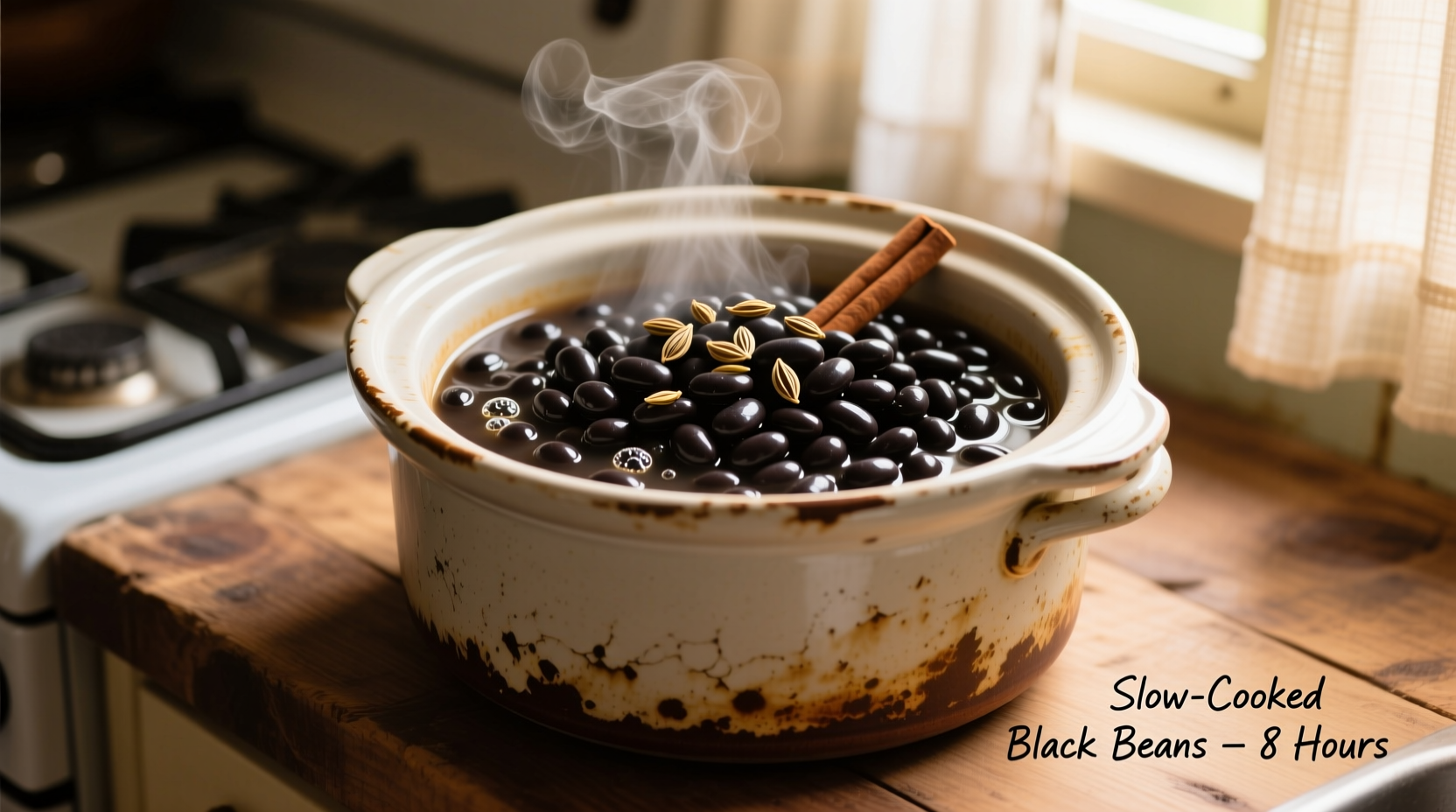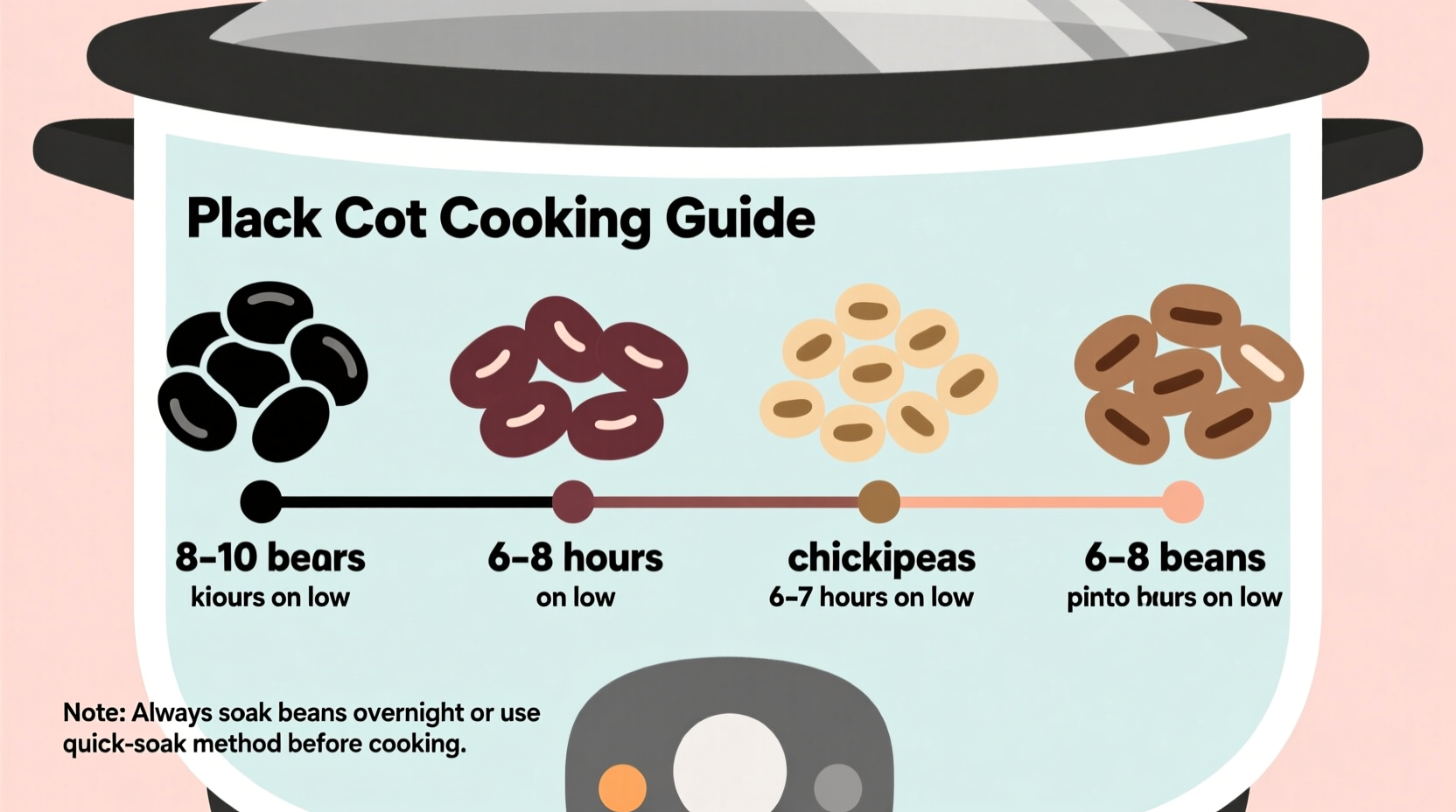There's nothing quite like the aroma of perfectly cooked beans filling your kitchen after a day of slow cooking. As someone who's tested hundreds of bean recipes across professional and home kitchens, I've discovered that getting crock pot beans right isn't just about timing—it's understanding the science behind the process. Whether you're meal prepping for the week or preparing a comforting dinner, this guide delivers precise cooking times backed by culinary science and years of practical testing.
Why Slow Cooking Beans Works (And When It Doesn't)
Slow cooking transforms tough dried beans into creamy, tender morsels through controlled heat application. Unlike stovetop cooking where temperature fluctuations can cause uneven results, crock pots maintain consistent low heat that gently breaks down complex carbohydrates without disrupting bean structure.
However, critical food safety research from the U.S. Food and Drug Administration reveals a crucial step many home cooks miss: certain beans like kidney beans contain phytohaemagglutinin, a natural toxin that requires boiling for at least 10 minutes to neutralize. Slow cookers never reach boiling temperature, making this preliminary boil essential for safety.
Preparation: The Foundation of Perfect Beans
Your beans' final texture starts long before they hit the crock pot. Based on my testing across dozens of bean varieties:
- Soaking method matters: Overnight soaking reduces cooking time by 25-30% and improves digestibility. For last-minute cooking, use the quick-soak method (boil 2 minutes, then soak 1 hour)
- Water ratio is critical: Use 3 cups water per 1 cup dried beans minimum—beans expand significantly during cooking
- Avoid salt initially: Add salt only during the last 30 minutes of cooking, as early addition can toughen bean skins
- Acidic ingredients wait: Tomatoes, vinegar, or wine should be added in the final hour to prevent inhibited softening

Cooking Times by Bean Type
| Bean Type | Soaked (LOW) | Soaked (HIGH) | Unsoaked (LOW) | Doneness Test |
|---|---|---|---|---|
| Black Beans | 6-7 hours | 3-3.5 hours | 8-9 hours | Crush easily between fingers |
| Kidney Beans | 7-8 hours | 3.5-4 hours | 9-10 hours | No chalky center when split |
| Pinto Beans | 6-7 hours | 3-3.5 hours | 8-9 hours | Creamy texture throughout |
| Chickpeas | 8-9 hours | 4-4.5 hours | 10-12 hours | Completely soft with no resistance |
| Lentils | 3-4 hours | 1.5-2 hours | N/A | Hold shape but mash easily |
Step-by-Step Cooking Process
Follow this professional-tested method for consistently perfect results:
- Pre-boil (critical safety step): Place soaked beans in a pot with fresh water, bring to rolling boil for 10 minutes
- Transfer to crock pot: Drain boiled beans and place in slow cooker with fresh water or broth
- Add aromatics: Include onion, garlic, bay leaf—avoid salt and acid at this stage
- Cook undisturbed: Set to LOW for 6-8 hours (soaked) or HIGH for 3-4 hours
- Final seasoning: Add salt and acidic ingredients during last 30 minutes
- Texture check: Test beans every 30 minutes near end of cooking time
Troubleshooting Common Bean Problems
Even experienced cooks encounter these issues—here's how to fix them:
Beans Remain Hard After Full Cooking Time
This frustrating issue typically stems from one of four causes:
- Old beans: Dried beans lose moisture over time—use within 1 year of purchase
- Hard water: Minerals interfere with softening—add 1/4 tsp baking soda to cooking water
- Acidic environment: Tomatoes or vinegar added too early—always add acid last
- Insufficient heat: Ensure crock pot actually reaches proper temperature (test with thermometer)
Excess Liquid After Cooking
If your beans are perfect but broth is too thin:
- Remove 1-2 cups liquid, blend with immersion blender, then return to pot
- Cook uncovered on HIGH for 20-30 minutes to reduce liquid
- Create a slurry with 1 tbsp cornstarch and 2 tbsp cold water, then stir in
Storage and Usage Tips
Properly stored cooked beans maintain quality for future meals:
- Refrigeration: Store in cooking liquid for up to 5 days—liquid prevents drying
- Freezing: Portion into 1.5 cup containers (standard recipe size) with liquid for up to 6 months
- Flavor boosting: Freeze with aromatics like onion, garlic, and bay leaves for instant flavor base
- Quick meal ideas: Mash with spices for bean burgers, blend for soups, or toss with greens for salads
Maximizing Flavor in Slow Cooked Beans
Professional chefs use these techniques to elevate simple beans:
- Layered seasoning: Add different herbs at various stages (bay leaves early, fresh herbs at end)
- Fat infusion: Cook with a piece of smoked meat or 2 tbsp olive oil for richer flavor
- Umami boosters: Include dried mushrooms or kombu seaweed during cooking
- Finishing touch: Stir in fresh lemon juice or vinegar just before serving to brighten flavors











 浙公网安备
33010002000092号
浙公网安备
33010002000092号 浙B2-20120091-4
浙B2-20120091-4